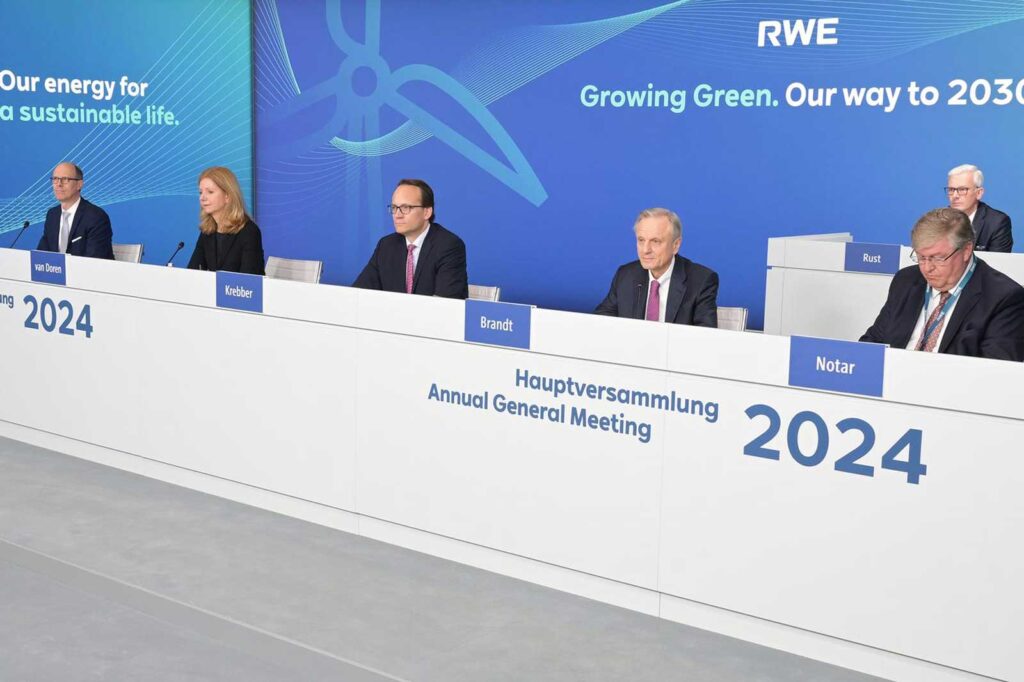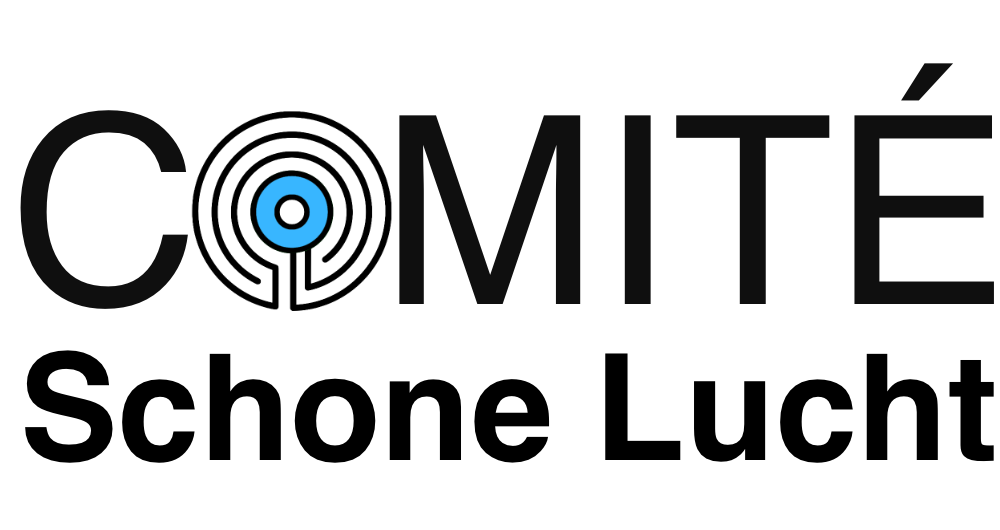Serious blockade at RWE board during AGM regarding origin of biomass

During the RWE Annual General Meeting last week, Biofuelwatch (UK) and the Clean Air Committee (NL) confronted the RWE board with critical questions about the quantity, origin and claimed sustainability of their coal and biomass power plants in the Netherlands (Amercentrale and Eemshaven). The critical questions were asked in 8 minutes of speaking time. The board responded in less than half a minute with three answers.
It remains a sore point. The lack of openness at RWE about where they get their biomass (wood) from. Malaysia does not sound like the country where the institutions are so powerful that they can stop abuse. ‘’Business-sensitive information’’ as claimed by both industry and politics is the mantra to cover everything. This makes control and compliance impossible. It is time that the supervision (the minister and supervisor NEa) forces the industry to provide openness as required based on the sustainability criteria. No clarity then no more government subsidies.—Fenna Swart, Director Clean Air Committee
RWE has received 2.5 billion euros in subsidies for burning wood in the Netherlands, but refuses to provide basic information about the origin of the wood and how much wood is taken directly from the forests. Based on the information we can gather from trade data, we can only guess why RWE wants to know as little as possible about the impact of the wood pellets they burn.—Almuth Ernsting, Biofuelwatch
Questions that were put to the RWE board:
- In 2024, RWE was the only company burning wood pellets in large power plants in the Netherlands. Neither Onyx nor Uniper burned wood pellets in their Dutch plants last year. Why did RWE continue to burn imported wood pellets in Dutch coal-fired plants, when other companies clearly decided that this no longer made economic sense?
- According to RWE’s annual report, the company’s plants emitted more than 3.4 million tons of CO2 from burning biomass in 2024. At the same time, RWE continued to burn coal in the Amer and Eemshaven power plants and plans to continue in Eemshaven this year. How does RWE justify this policy at a time when the CBS warns that greenhouse gas reductions in the Netherlands have levelled off?
- RWE continues to talk about large-scale conversion of both Dutch plants to 100% biomass with CO2 capture and storage (BECCUS). What evidence does RWE have that it is possible to capture and store carbon from wood combustion on a large scale, something that no other company in the world has been able to successfully demonstrate so far?
- Why does RWE continue to talk about long-term plans for BECCS, while the Dutch government and parliament have rejected this for large power plants and have ruled out subsidies for BECCS in plants with a capacity above 100 MW?
- Most of the wood pellets burned by RWE come from the southeastern US, followed by Canada, Malaysia, Belgium and Vietnam. What is the origin of the wood imported by RWE, i.e. from which countries, regions or provinces, from which suppliers, and how much comes from primary forests and sawmill residues?
- In February 2024, RWE received a shipment of wood pellets from the Malaysian province of Sarawak, which lost 1.71 million hectares of lowland rainforest in the decade to 2023. The only pellet plant in Sarawak that complies with the EU-RED2 standard is Samling. The Forest Stewardship Council (FSC) is currently investigating a complaint from a coalition of environmental organizations active in the province about “illegal logging, destruction of high natural values and conversion into forest concessions”. Why did RWE decide to source pellets from Samling?
- The remaining 191,000 tons of Malaysian pellets that RWE burned last year must come from a pellet plant in Pahang that sources wood from rubber plantations in that province. No other Malaysian mill has the proper voluntary certification. Pahang lost 21% of its rainforest in the decade to 2023, and a scientific study shows that both rubber and oil palm plantations have been the main drivers of the certification. The mill’s certificate, under the Sustainable Biomass Program (SBP), states that the auditors rely on inspections of plantations carried out by the company itself, i.e. not by an independent inspector. Does RWE consider this to be credible evidence and can you state that the pellets you purchase are not linked to rainforest destruction?
RWE answers:
- 3.4 million tons of CO2 emissions denied
RWE executives ignored the finding of 3.4 million tons of CO2 emissions from biomass combustion, which is included in RWE’s annual. - No transparency about the origin of biomass
RWE’s own information about the amount of electricity generated from biomass in 2024 corresponds to the total Dutch import of wood pellets. Based on Eurostat data, it is known that most wood pellets come from the US, Canada and Malaysia. The directors of RWE did not want to answer the question of where in the various countries – for example from which Canadian provinces – the pellets came from. - Dubious import of wood pellets from Malaysia ignored
Critical questions about the import of pellets by RWE from Malaysia were ignored. As indicated during the contribution of the nature organizations, only two pellet factories in Malaysia meet the voluntary certification obligation according to the Dutch sustainability rules. Trade figures show that both supplied RWE last year. One factory belongs to a company that was investigated by the Forest Stewardship Council following a complaint about “illegal logging, violations of traditional and human rights” and other violations. The other pellet factory gets its wood from rubber plantations, while researchers have shown that such plantations are one of the main causes of deforestation in that province.
